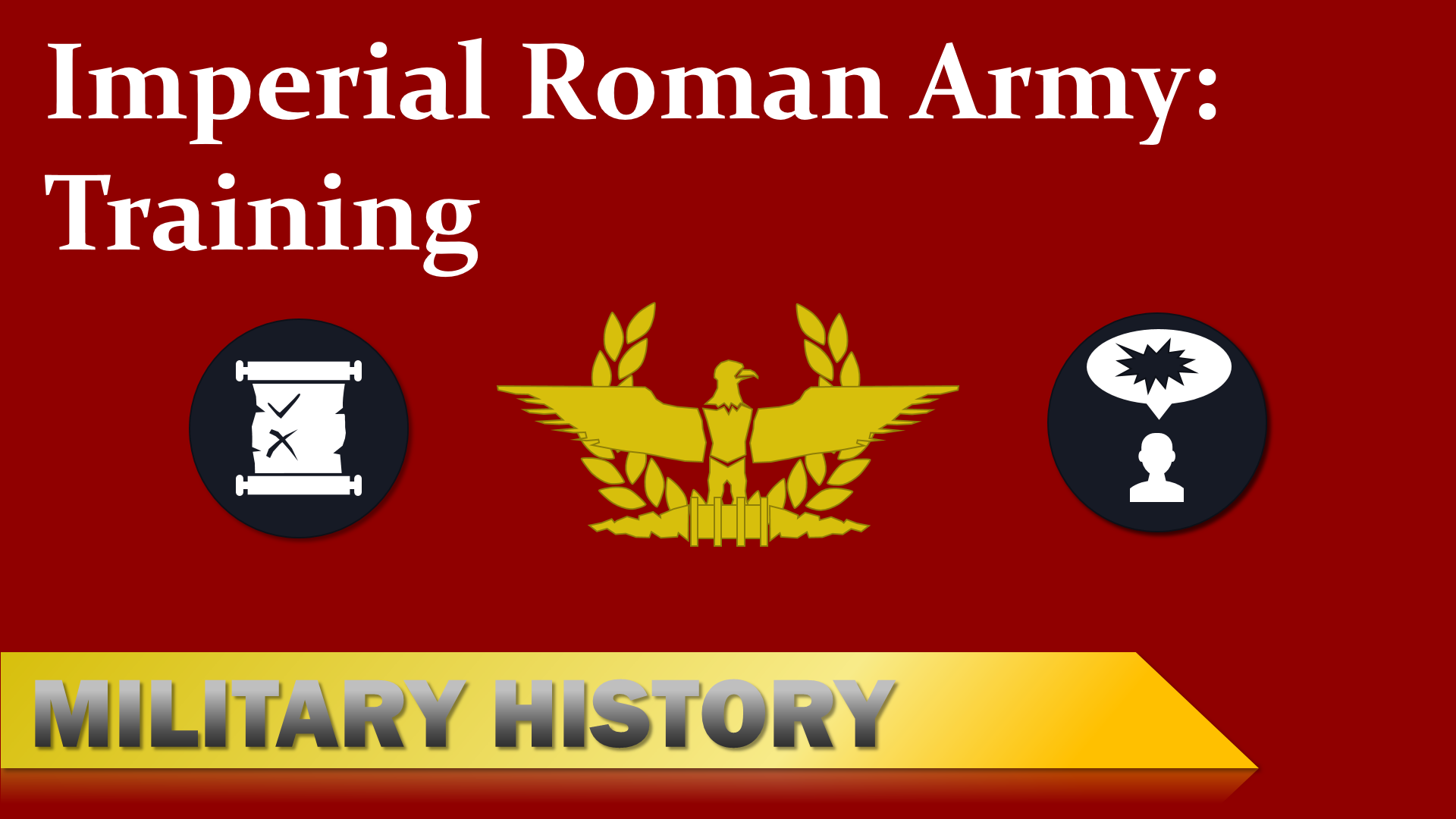Please note: This post contains amazon affiliate links. As an Amazon Associate I earn from qualifying purchases.
Intro
“Put an equally brave, but untrained soldier in the front line, and he will look like a woman.” -Cicero
This gives a very good impression how the Romans thought about training.
Training served many purposes like,
- ensuring combat readiness, discipline and unit cohesion
- serving as a political tool in foreign and domestic affairs
- improving and maintaining the infrastructure of the Empire
Basic Training
To become a fully enlisted soldier in the Army, every recruit had to pass basic training.
Basic training was performed daily for at least 4 months. (Davies: p. 14) It ensured that the recruit was fit for duty in the Roman Army, thus each recruit had to pass several proficiency tests. Recruits failing those tests would receive a different diet and notes in their records.
Training Content
Whereas basic training was probably more intensive and fundamental, the regular training was similar. It covered individual and collective aspects as well as combat and non-combat training.
Individual training:
- weapons training, including close combat and ranged weapons
- physical exercise like swimming, running and jumping
Collective training:
- improving coordination like keeping the ranks close and parading
- construction training like digging ditches and planting palisades
- mock fights where one party tries to dislodge another party defending with shields
3 times a month infantry and cavalry together went on a route march (amubulation) with full equipment of about twenty miles. This march was not just going from one destination to another, it was basically a small military exercise that covered various maneuvers for the cavalry, crossing different terrain and after reaching the destination, a camp with ditches and ramparts was constructed.
Furthermore, large scale military exercise with other forces were conducted periodically and regular inspections served as quality control. We know from Emperor Hadrian that he visited and inspected large scale exercises. Giving reports on the performance of units, including praise and criticism. But Hadrian put a strong emphasis on training and discipline, thus he was probably an exception rather than the rule.
Training Infrastructure
To ensure the proper training, facilities and specialist are needed. There were different training grounds for the infantry and cavalry. Usually training was done outside, but in case of very poor weather special training buildings were available to perform the activities indoors.
Additionally, there were special areas for training aspects like camp-building, fort-building, siege-works, artillery practice and bridge-building.
Furthermore, there were several specialist for drill instructions, weapons and cavalry training.
- Campidoctor : Drillinstructor
- Doctor armorum or armatura: weapons instructor
- Doctor cohortis: drillinstructor battalion (cohort)
- Exercitatores & magister campi: cavalry instructors
Benefits of Training
Discipline & readiness
The constant exercises and marches helped in maintaining combat readiness, physical fitness and unit cohesion.
Or as Veranius put it: “Trained by sweating, puffing and panting, exposed to summer heat and bitter cold under an open sky, the soldiers become accustomed to the future hardships of real fighting.” (Davies:p. 137) (Q. Veranius)
Building Infrastructure
Additionally, soldiers were often used to build roads and other important buildings. Bohec states that the soldiers could build markets and whole cities. The construction of towers, forts and defense lines was performed by the infantry whereas the cavalry guarded them.
The construction and engineering aspects was an aspect of Imperial Roman doctrine. The fast construction of bridges and other structures should remind barbarians of their inferiority, thus deterring them from attacking.
Conclusion / Outro
“Exercises that do not involve the perils of a real battle, are a sufficient relaxation to soldiers, however weary they may be.” (Davies:p. 137) (Q. Veranius)
Training in the Imperial Roman Army was a crucial and complex process that didn’t just focus on the ability of the soldiers to fight in battle, but to succeed in enduring campaigns and thus maintaining the capabilities of the Empire to wage and win wars.
Related Articles
Sources
Books
- Davies, Roy W.: Service in the Roman Army (amazon.com affiliate link)
- Phang, Sara Elise: Military Documents, Languages, and Literacy; in Erdkamp: A Companion to the Roman Army (amazon.com affiliate link)
- Wesch-Klein, Gabriele: Recruits and Veterans; in Erdkamp: A Companion to the Roman Army (amazon.com affiliate link)
- Le Bohec, Yann: The Imperial Roman Army (amazon.com affiliate link)
- Webster, Graham: The Roman Imperial Army of the First and Second Centuries A.D (amazon.com affiliate link)
- Nemeth, Eduard; Fodorean, Florin: Römische Militärgeschichte (amazon.de affiliate link)
- Culham, Phyllis: Imperial Rome at War. In: The Oxford Handbook of Warfare in the Classical World (amazon.com affiliate link)
| amazon.com | amazon.co.uk | amazon.ca | amazon.de |
Disclaimer amazon.com
Bernhard Kast is a participant in the Amazon Services LLC Associates Program, an affiliate advertising program designed to provide a means for sites to earn advertising fees by advertising and linking to amazon.com.
Disclaimer amazon.co.uk
Bernhard Kast is a participant in the Amazon EU Associates Programme, an affiliate advertising programme designed to provide a means for sites to earn advertising fees by advertising and linking to Amazon.co.uk.
Disclaimer amazon.ca
Bernhard Kast is a participant in the Amazon.com.ca, Inc. Associates Program, an affiliate advertising program designed to provide a means for sites to earn advertising fees by advertising and linking to Amazon.ca.
Disclaimer amazon.de
Bernhard Kast ist Teilnehmer des Partnerprogramms von Amazon Europe S.à.r.l. und Partner des Werbeprogramms, das zur Bereitstellung eines Mediums für Websites konzipiert wurde, mittels dessen durch die Platzierung von Werbeanzeigen und Links zu amazon.de Werbekostenerstattung verdient werden können.
Online Resources
Please note: This post contains amazon affiliate links. As an Amazon Associate I earn from qualifying purchases.

3 thoughts on “Imperial Roman Army – Training”
Comments are closed.